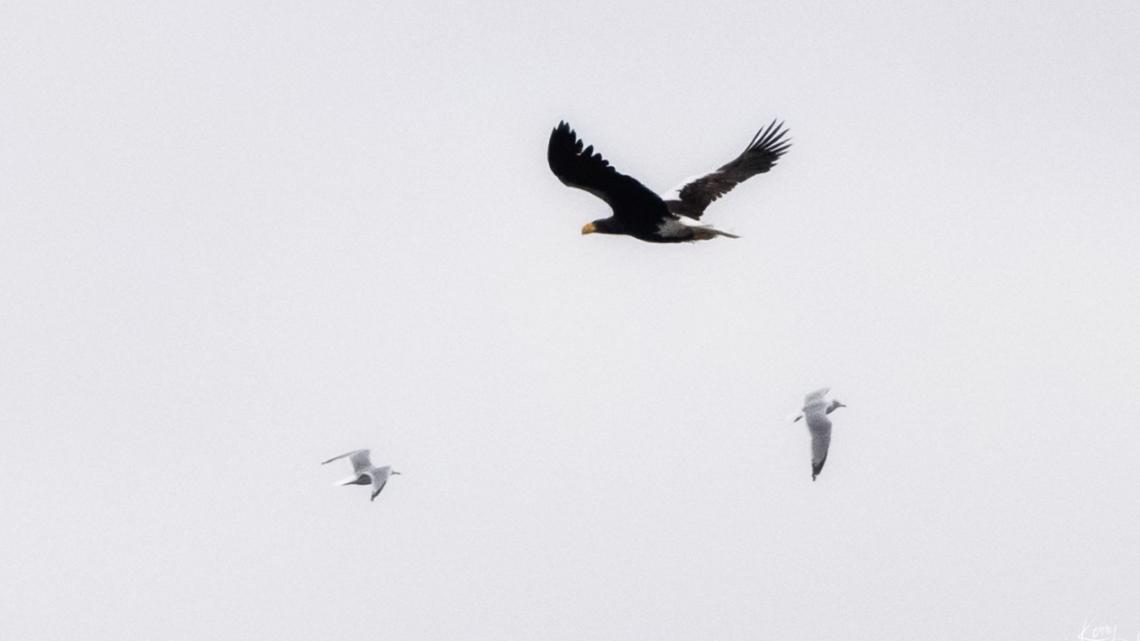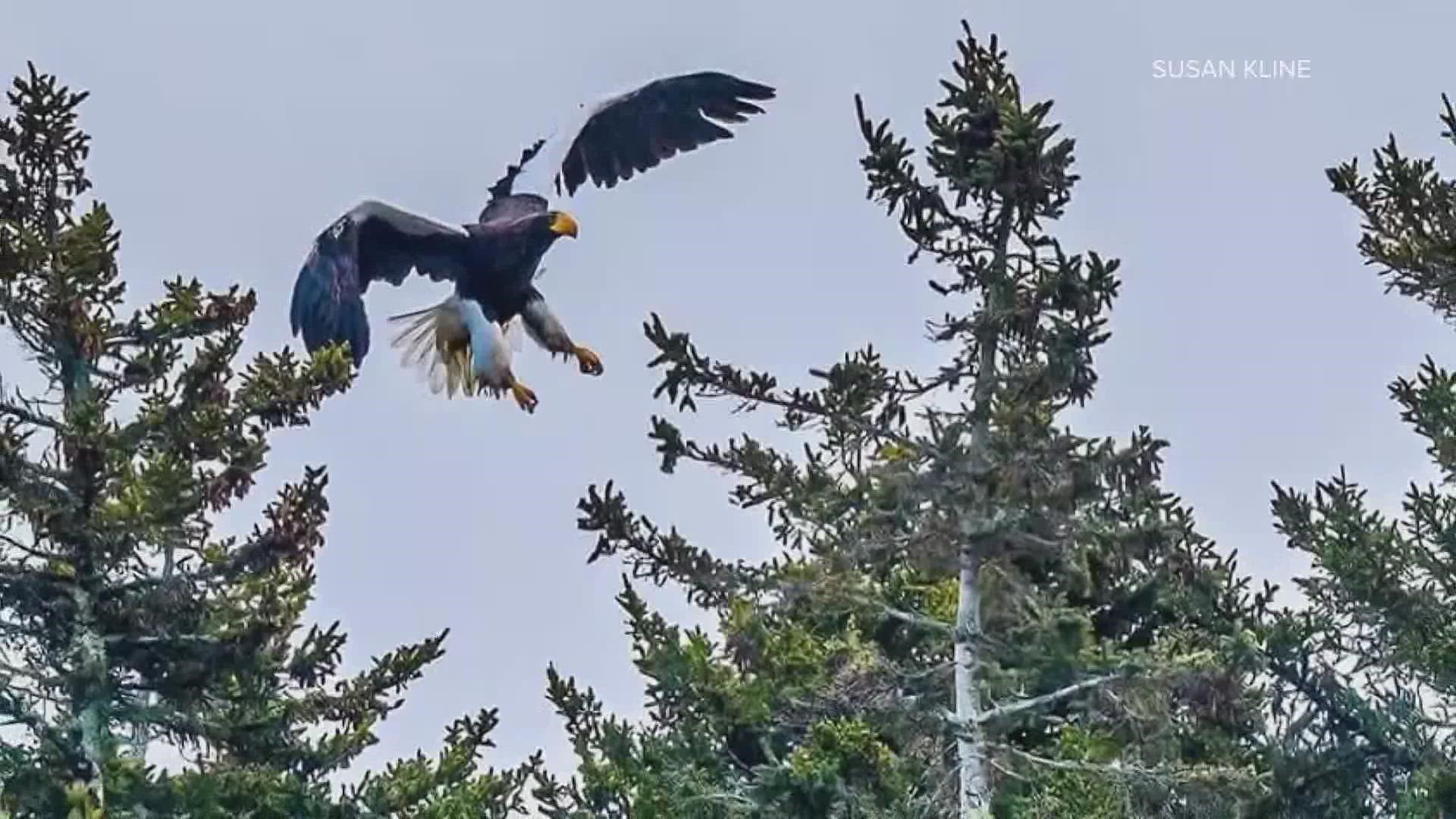GEORGETOWN, Maine — Maine birdwatchers are getting a treat to end 2021 with the spotting of a rare bird called the Steller's sea eagle flying in the Georgetown area.
Staff Naturalist Doug Hitchcox said in a post on the Audubon website that the bird has been roaming around North America since the spring. He said the Steller's sea eagle was spotted in Maine on Thursday.
"The Steller’s Sea-Eagle is likely to be found hunting almost anywhere you could find a Bald Eagle right now, and almost certainly will be around open water (for catching fish). Unfortunately this means there is a ton of space for this bird to move around and it’ll likely take a lot of effort from the birding community to cover the area and find it," Hitchcox wrote.
Many people reported seeing it around the Five Islands area throughout the day Friday. Hitchcox wrote that this is a large area with lots of eagles.


The San Diego Zoo notes that the Steller's sea eagle is considered the most powerful and aggressive of its closest relatives, the bald eagle and the white-tailed sea-eagle. The Steller’s sea eagle was named for noted 18th-century zoologist and explorer Georg Wilhelm Steller.
"Often called the world’s most magnificent bird of prey, the Steller’s sea-eagle is dark, impressive, the largest of all sea-eagles, and the heaviest known eagle. Despite its large size and attractive appearance, its habits are not well known," the San Diego Zoo wrote on its website. "One of the rarest raptors in the world, very little is known about Steller’s sea-eagles, due to the remote nature of their primary habitat, the rocky seacoasts and rivers of northeastern Siberia in Russia. These birds of prey spend much of the warm season in this region, and some stay here year-round."
Read more from the San Diego Zoo below:
Steller’s sea eagles are vulnerable and have been given complete legal protection in Russia, the only place they breed, and in Japan, where they overwinter. Despite these protections, human behavior continues to harm the remaining sea eagle population. In Russia, the birds are losing their habitat because of the development of hydroelectric power projects and logging in the forested areas where they nest. The rivers where the sea eagles fish are being contaminated by chemicals from local industries.

